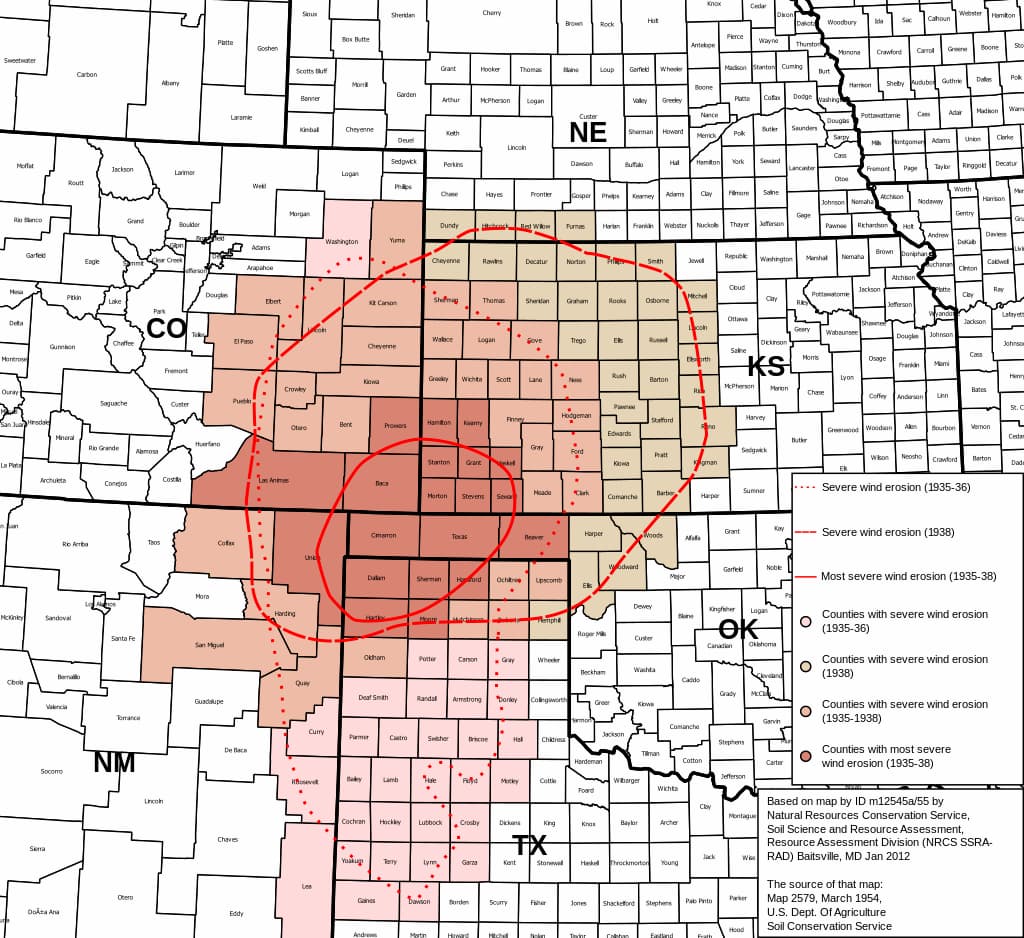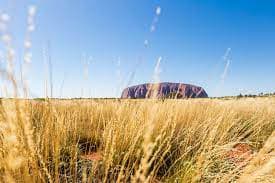The first modern experience many people had with drought was the American Dust Bowl of the 1930s. Decades of poor land management and the destruction of the topsoil meant that the fertile land just blew away in the wind. The states of Texas, New Mexico, Oklahoma, Kansas, Colorado, and Nebraska all suffered, with the worst concentrated in the Oklahoma panhandle.

Map of states and counties affected by the Dust Bowl between 1935 and 1938 originally prepared by the Soil Conservation Service. (U.S. Dept. of Agriculture)
This drove the poor farmers west, with many ending up in California, as in John Steinbeck’s The Grapes of Wrath. The dust storms affected all of the country to the east of the affected area, with even New York City suffering from ‘black blizzards’ of dust from the middle of the country.
Virgil Thomas wrote the music for a 1936 documentary on how farming practices lead to the problem, The Plow that Broke the Plains, and in his soundtrack, used folk song and minimal orchestration to convey his ideas.
Virgil Thomson: The Plow that Broke the Plains – V. Drought (Los Angeles Chamber Orchestra; Neville Marriner, cond.)
Today, though, with climate change, drought affects far more than middle America. In 2023, drought conditions were found ‘across much of Canada, South America, Australia, northern China, and the Mediterranean region’. Wildfires and low crop yields cast a dark cloud over the future.
In his 1989 work, Safricana, Danish composer Søren Barfoed writes a movement to drought, with the two percussionists leaving us with a dry sound.
Søren Barfoed: Safricana – III. Drought — (Safri Duo)
William Alwyn’s song cycle Invocations, has a movement about the 1976 drought. The text, by Michael Armstrong, makes reference to parched grass, a dying pool, and a dusty spiral, but also ends with the idea that ‘Hope is a dry seed hidden | under crisp leaves in the gutter’. A dry seed in a dry gutter, waiting for the promise of water.
William Alwyn: Invocations – No. 4. Drought (Jill Gomez, soprano; John Constable, piano)
Australian composer Miriam Hyde (1913–2005) was inspired by an image of Ayers Rock (Uluru) with parched grass in the foreground. Both the sandstone mountain and the grass await the coming rains.

Uluru through the desert grass (photo by Andrew Watson)
Miriam Hyde: Drought-Stricken Grasses (John Martin, piano)
And then, at the end of the drought, when the rain comes, the whole atmosphere changes.
Ye Xiaogang: Cantonese Suite, Op. 51 – IV. Thunder in Drought (Rheinland-Pfalz State Philharmonic Orchestra; Franck Ollu, cond.)
Looking ahead to 2024, more drought will come in the US, in New Mexico and Arizona, across Iowa, and northern states such as Washington and Minnesota. On other continents, southern Africa, western Asia, and southern South America have predictions for below-normal rainfall. At the same time, the El Niño weather pattern will be bringing abnormal rainfall across Latin America.
Rain or Drought, Feast or Famine. So much of our modern world seems to be moving from one extreme to another.
For more of the best in classical music, sign up for our E-Newsletter


